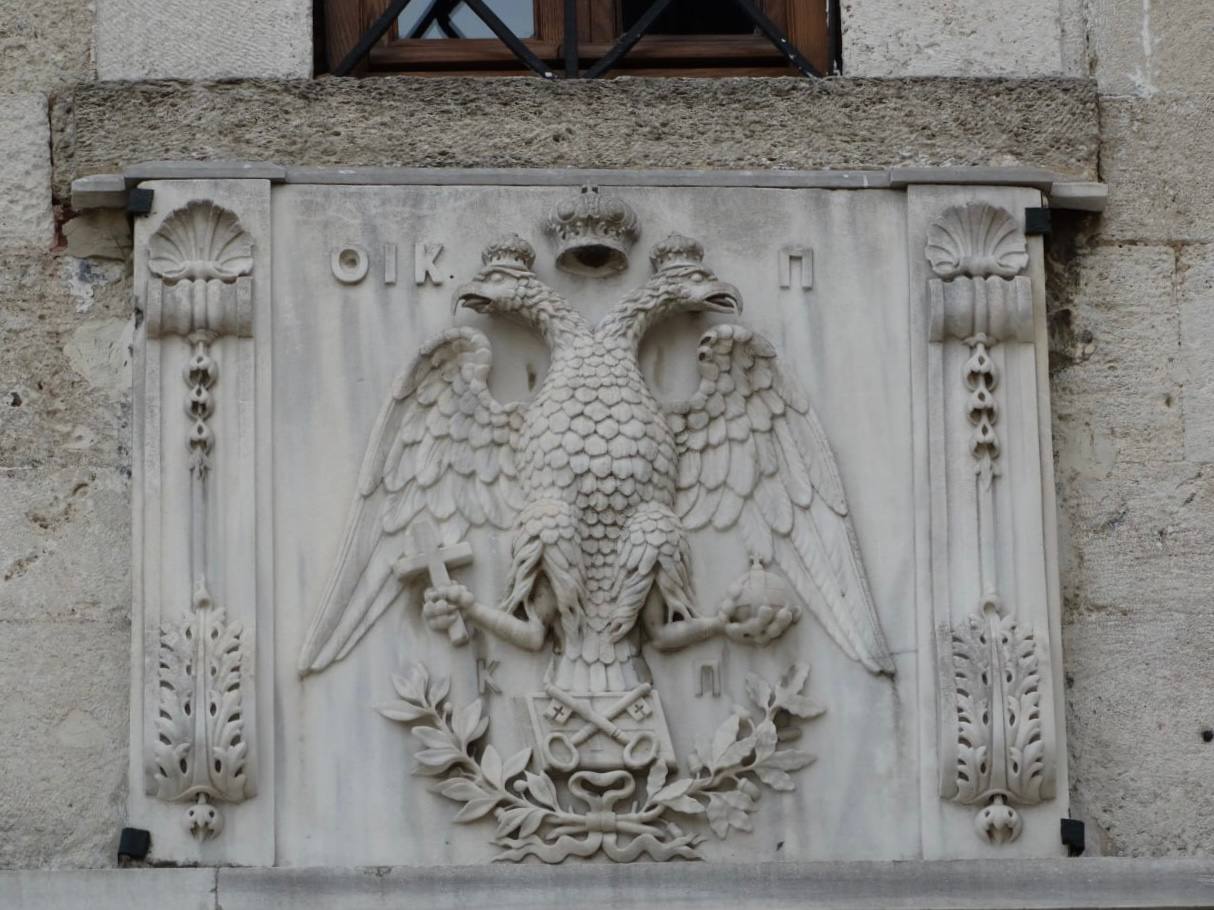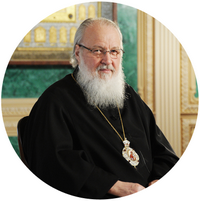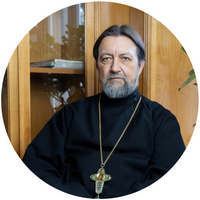
Статья доктора теологии, профессора Общецерковной аспирантуры и докторантуры, проректора по научной работе ОЦАД Евгения Анатольевича Пилипенко посвящена исследованию богословско-философских методологических особенностей документа Константинопольского Патриархата "За жизнь мира" (For the life of the World). Выявляются такие дискуссионные и неоднозначные для православного богословия черты содержания документа как: опора на теоэстетику, историзм и экуменическая специфика.
***
I would like to share my observations on the methodological implications of the Constantinople Patriarchate’s document “For the Life of the World: Toward a Social Ethos of the Orthodox Church” (FLOW).
I am not so interested in the way the text is structured, based as it is on “the liturgical celebration of the Orthodox Church” (as mentioned in the “Executive Summary”), nor in its concrete elaboration of socio-ethical themes with the traditional reliance on patristic quotations (represented by a wide range, from the fathers of the ancient church to the saints of our times).
My interest lies rather in the implicit modern attitudes and approaches that determine certain of its passages of thought, argumentation, and style.
Besides anthropological personalism, with its main accent on the dignity, uniqueness, and freedom of the human person (§60–62, 81) — which has had some theological reception in Orthodoxy — such distinctive unconventional or innovative methodological features include a reliance on theo-aesthetics, historicism, and ecumenical reception.
The methodological influence of the theo-aesthetic approach (with its Catholic roots in Hans Urs von Balthasar) can be seen in the categories of beauty and goodness as manifestations of the glory of God in a created reality that is “called to be ‘beautiful.’” These profound elements of faith are “the source and content of the entire cosmic vision of the Church” (§73). At the same time, such assertions as “the beauty and goodness of creation declare themselves lavishly in the very frame of nature” (§42), creation is “a realm of communion and delight” (§74), the whole of cosmic existence has “longing for God’s glory” (§77), and to be “raised up into spiritual life” (§68) go beyond the conventional dogmatic framework of creation theology. Through an internally implied appeal to natural theology, these assertions reach a universal scope and ecumenical breadth of perception of the divine creative action: “Knowing that God reveals Himself in countless ways and with infinite ingenuity, the Church enters into dialogue with other faiths with a willingness to marvel at and admire the diversity and beauty of the generous manifestations of divine goodness, grace and wisdom among all peoples” (§55).
In some fragments there is an excessive idealistic aestheticization of the created world verging on its sacralization, so that the world and nature become a sacramental place, a kind of sacrament: “The Church seeks to cultivate a truly liturgical and sacramental path to communion with God in and through his creation” (§73), and, “In all our connections and relationships, the Word of God is mystically present” (§54). From the perspective of a healthy Orthodox theology, this sometimes goes too far, blurring the boundaries of Christian sacramentology, and does not seem entirely sober. It is also strange, in a soteriological sense, that it is not so much the transfiguration of the world and nature (“creatio eschatologica”) as the restoration to a pristine, “primordial” state and the maintenance of the world and nature (“creatiooriginans,” “creatio continua”) that becomes a eucharistic and soteriological ultimate goal. For example: “to offer the world back up to its creator in genuine thanksgiving . . . and in that act of worship creation is restored to itself . . . as intended by God from the beginning” (§74), since “Christ came in part to restore to material creationits original nature as God’s earthly paradise” (§77). In such formulations as “a promise of the complete healing of humanity and the restoration of a created order” (§80), we see an echo of the old problematic concept of apocatastasis. In sharp contrast to this vision is the deficient use of soteriological categories in a purely moral context(cf. §18: “our very salvation depends upon the hospitality we extend to strangers”).The proper theological meaning of the terms “salvation” or “redemption” ultimately remains unfocused.
The document’s methodological historicism is reflected in the desire to consider some of the teachings and practices of the Orthodox Church through their gradual formation—“in time”—in specific circumstances (for example, on marriage [§20]), and, accordingly, to consider the contemporary context in resolving problems. Both timeless ideals and the reality of today’s historical moment are important. Therefore, it is methodologically acceptable and necessary to restore, revise, or develop new pastoral and liturgical practices (§28, 26, 34, 48); to rethink, correct, or deepen theological conceptions of certain subjects and phenomena in connection with scientific discoveries (§31, 72); to update the exegetical method (§39); to recognize past errors with penitence (§57); to refuse the generalizing of moral judgments and the application of established rules when the church admits its incompetence in certain matters; and to pursue a flexible approach in each individual case (§26, 61). To keep pace with the times, the Orthodox Church “should rejoice in the advances of all the sciences, gladly learn from them, and promote scientific education, as well as public and private funding for legitimate and necessary scientific research” (§71); should be in constant dialogue with culture and society, including non-Christian and non-Orthodox cultures (§54, 81); and should be “fully prepared to be instructed by many of their own speculative, cultural, and spiritual achievements” (§58).
Going beyond the mental framework of one’s own confessional tradition, and outward to other religious worldviews and paradigms, characterizes the document’s methodological ecumenism. This manifests not only formally in the fact that there is a separate section, VI, “Ecumenical Relations and Relations with Other Faiths,” dedicated to this theme, and also in the conceptual, implicit reception of heterodox theological thought, without any references or quotations. Many statements of the document bear the imprint of Latin American liberation theology and, in part, J. Moltmann’s theology of hope. Active solidarity and concern for the poor and disadvantaged are elevated to a spiritual-religious and soteriological level and to a necessary means and condition of Christian salvation (§33, 40, 66). The struggle against economic inequality between rich and poor and its causes as a “systemic evil” is proclaimed, invoking the principle of equitable redistribution of wealth (§34, 39, 41, 67, 82), even if this “may run contrary to some of the modern world’s most cherished understandings of private property” (§35).
Missing from the document is a consideration of the material resources of the Orthodox Church itself as a social entity, as well as of the means of the socially responsible distribution of these resources by the church hierarchy. For this it would be necessary to devote attention not only to the liturgical, eucharistic, and communal but also the structural side of ecclesiology, concretely indicating the task of incarnating into life the imperatives outlined above. Otherwise it remains unclear to whom the appeal for the struggle for fairness and equality in society is aimed, and on whom the essential responsibility lies.
There are noteworthy parallels between FLOW and several documents of Vatican II: “Nostra aetate,” concerning relations with non-Christian religions, and “Lumen gentium” and “Gaudium et spes,” concerning the position and tasks of the church in modernity, which are in this document described terminologically and semantically in expressions very close to Catholic texts. For example, the church “dwells among the nations as a sign and image of the permanent and perpetual peace of God’s Kingdom, and as a promise of the complete healing of humanity and the restoration of a created order shattered by sin and death. . . . The Church is not only the living icon of the Kingdom, but is also a ceaseless prophetic witness of hope and joy in a world” (§80; cf. “Lumen gentium” 1, 8.3, 15; “Gaudium et spes” 1, 21).
The innovation of some methodological and theological approaches in the document, which claims pan-Orthodox status, may cause confusion, since such approaches are not always welcomed in all local churches and are viewed some-times as highly debatable. Theo-aesthetics, for example, has prompted controversy and rejection in some Russian ecclesiastical schools. Orthodox theologians also often express skepticism or a negative attitude toward methodological historicism and personalism (e.g., Jean-Claude Larchet), not to mention the most controversial point—ecumenical relationality. The renewal and modernization of methodology in FLOW is justified in many respects. A clear and careful justification of its methodology would have contributed to a clearer perception of the document. But, unfortunately, this was not included.
Источник: Pilipenko. E. A. // Journal of Orthodox Christian Studies". Volume 5, Number 1, 2022.


